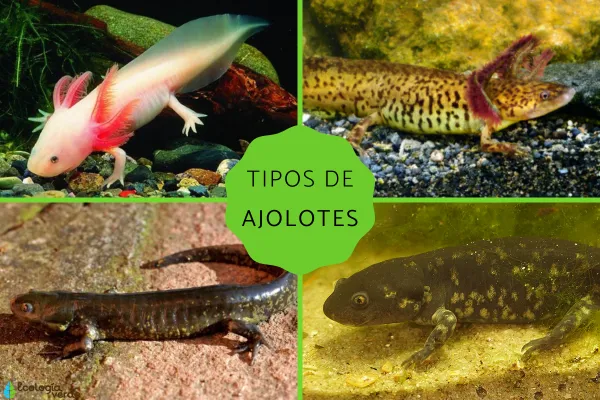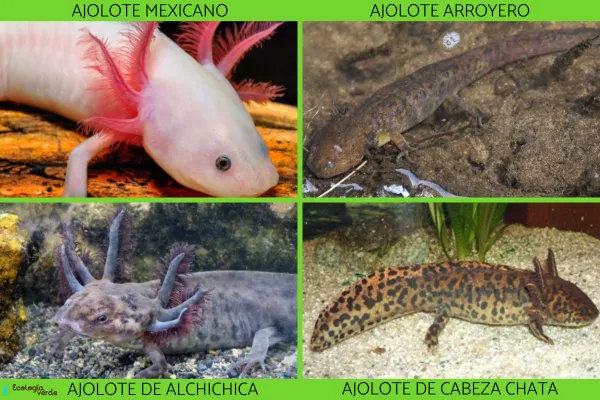Fish or amphibian? While axolotls live their entire lives in water, they are in fact amphibians, not fish. Their appearance can be confusing: they have tails, fins, and external gills like fish, but they also have limbs like other amphibians. That’s why many people refer to them as “walking fish.” Beyond their unusual look, axolotls possess a range of fascinating biological traits that make them a subject of intense interest both for the public and the scientific community.
In this article, we’ll explore what axolotls are, their unique characteristics, the different species that exist, and some surprising facts that make them one of the most extraordinary creatures on Earth.

Axolotls are aquatic amphibians belonging to the class Amphibia and the genus Ambystoma. Here are the most notable traits that define them:
Perhaps the most fascinating feature of axolotls is neoteny, a condition in which the animal retains juvenile characteristics into adulthood. While most amphibians undergo a metamorphosis from a larval form into an adult (like a tadpole turning into a frog), axolotls remain in their larval stage for life. As a result, adult axolotls still have dorsal fins, feathery external gills, and a tail like a tadpole.
Axolotls reach sexual maturity quickly, even though they retain larval traits. They are oviparous, meaning they reproduce by laying eggs. A single female can lay over 400 eggs at a time, and the incubation period ranges from 10 to 14 days depending on temperature and environmental conditions.
Axolotls are endemic to North America, particularly Mexico, where they once thrived in the lakes and canals of the Valley of Mexico. Today, they are primarily found in Lake Xochimilco, though even that habitat is shrinking due to urbanization and pollution. Axolotls hold not only ecological importance but also cultural significance in Mexico.
Axolotls are mostly inactive during the day, preferring to rest or hide in aquatic vegetation. At night, they become more active, engaging in feeding and reproductive behaviors.
Axolotls are strict carnivores. In the wild, they feed on small prey such as insect larvae, worms, small fish, crustaceans, and mollusks. In captivity, they are often fed bloodworms, brine shrimp, and small feeder fish.
There are currently 33 recognized species of axolotls, most of which are found in Mexico. Below are some of the most notable species:
The most well-known and iconic species. Wild Mexican axolotls have dark brown, black, or olive-green skin with speckled patterns that help them camouflage. Captive-bred individuals come in various colors such as albino, golden, leucistic (pale with black eyes), and melanoid (pure black) due to selective breeding.
Endemic to streams near the Nevado de Toluca volcano in central Mexico, this species is dark-colored with lighter spots and has gray lips and underparts.
Native to Lake Alchichica in the Mexican state of Puebla, at 2,300 meters above sea level. It has a distinct yellow body with black spots, making it visually striking.
Also native to Mexico, this species has a notably broad, flat head that is twice as long as it is wide. Its dark body is covered with creamy or yellowish spots.

Here is a list of additional species of axolotls:
Ambystoma altamirani
Ambystoma andersoni
Ambystoma annulatum
Ambystoma barbouri
Ambystoma bishopi
Ambystoma bombypellum
Ambystoma californiense
Ambystoma cingulatum
Ambystoma dumerilii
Ambystoma flavipiperatum
Ambystoma gracile
Ambystoma granulosum
Ambystoma jeffersonianum
Ambystoma laterale
Ambystoma leorae
Ambystoma lermaense
Ambystoma mabeei
Ambystoma macrodactylum
Ambystoma maculatum
Ambystoma mavortium
Ambystoma opacum
Ambystoma ordinarium
Ambystoma rosaceum
Ambystoma silvense
Ambystoma subsalsum
Ambystoma talpoideum
Ambystoma texanum
Ambystoma tigrinum
Ambystoma velasci
Axolotls are carnivorous hunters. Their diet includes:
Mosquito larvae
Tadpoles
Worms
Insects
Crustaceans
Small fish
Mollusks
In captivity, they are usually fed soft, protein-rich foods like bloodworms, daphnia, and feeder fish.
Yes—amazingly well! Axolotls are one of the few vertebrates with the ability to regrow entire limbs, as well as regenerate heart tissue, spinal cord, and even parts of their brain. This incredible trait has made them a valuable model organism for medical and genetic research into tissue regeneration.
Unfortunately, yes. Axolotls are listed as critically endangered by the International Union for Conservation of Nature (IUCN). Their wild populations have dramatically declined due to:
Water pollution
Habitat destruction from urbanization
Illegal pet trade
Introduction of invasive species like tilapia and carp
The Mexican government has implemented environmental protection programs, but more international awareness and conservation efforts are needed to save these remarkable creatures.
To learn more, see our article: Why the Mexican Axolotl Is in Danger of Extinction.
Axolotls are truly one-of-a-kind animals. Their bizarre appearance, powerful regenerative abilities, and fragile conservation status make them both mysterious and worthy of protection. Whether admired as a national symbol of Mexico, studied for their biology, or kept as exotic pets, axolotls remind us of the diversity and wonder of the natural world—and why we must act to preserve it.
If you enjoyed this article, check out more features on amphibians and endangered species on our site.
animal tags: axolotls
We created this article in conjunction with AI technology, then made sure it was fact-checked and edited by a Animals Top editor.